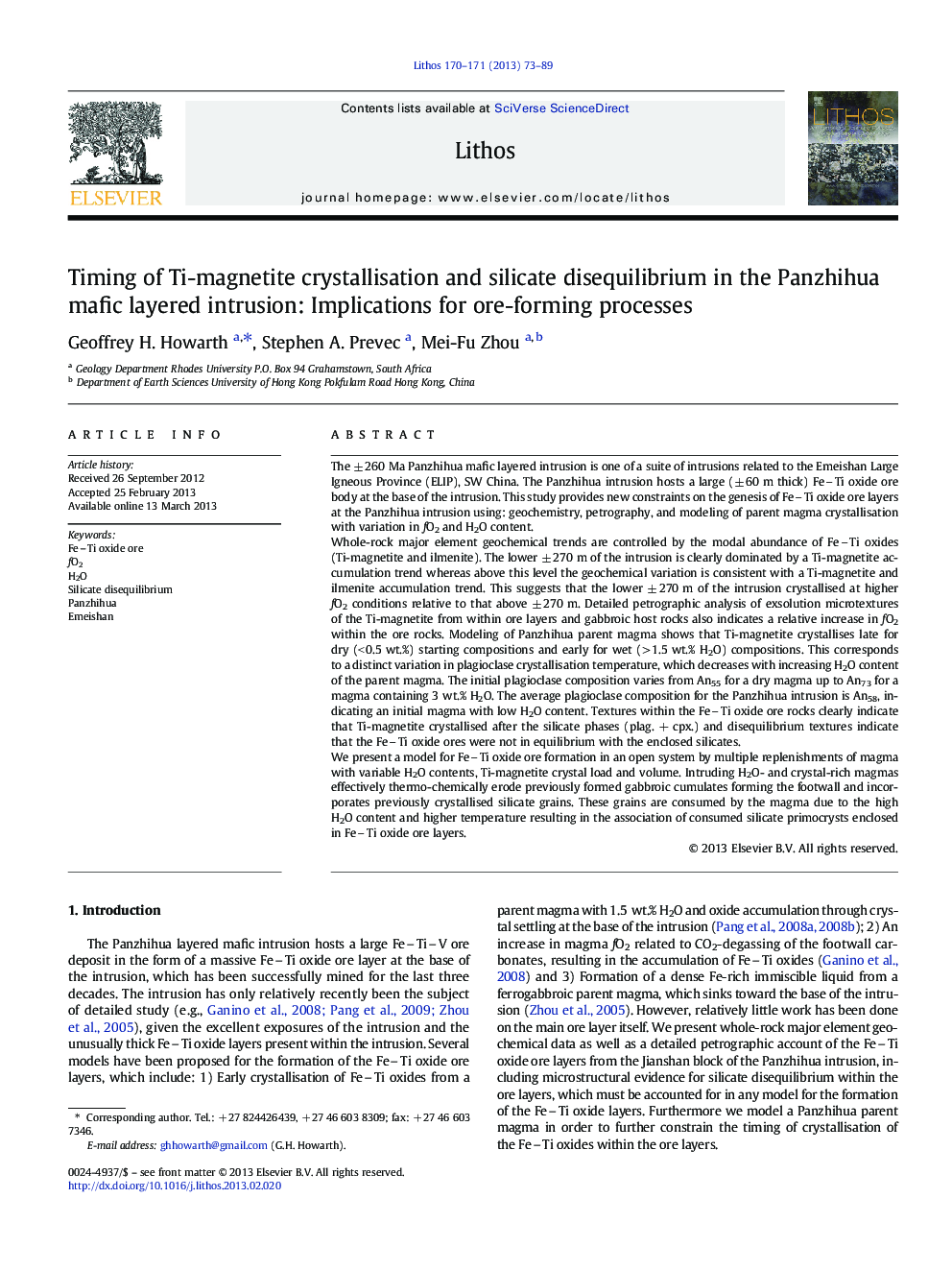| Article ID | Journal | Published Year | Pages | File Type |
|---|---|---|---|---|
| 4716232 | Lithos | 2013 | 17 Pages |
•Silicate disequilibrium imply late crystallisation of FeTi oxides at Panzhihua.•H2O significantly effects silicate crystallisation.•H2O significantly effects the composition of plagioclase.•Late stage addition of H2O can account for silicate disequilibrium.•H2O addition favours abundant FeTi oxide crystallisation.
The ± 260 Ma Panzhihua mafic layered intrusion is one of a suite of intrusions related to the Emeishan Large Igneous Province (ELIP), SW China. The Panzhihua intrusion hosts a large (± 60 m thick) FeTi oxide ore body at the base of the intrusion. This study provides new constraints on the genesis of FeTi oxide ore layers at the Panzhihua intrusion using: geochemistry, petrography, and modeling of parent magma crystallisation with variation in fO2 and H2O content.Whole-rock major element geochemical trends are controlled by the modal abundance of FeTi oxides (Ti-magnetite and ilmenite). The lower ± 270 m of the intrusion is clearly dominated by a Ti-magnetite accumulation trend whereas above this level the geochemical variation is consistent with a Ti-magnetite and ilmenite accumulation trend. This suggests that the lower ± 270 m of the intrusion crystallised at higher fO2 conditions relative to that above ± 270 m. Detailed petrographic analysis of exsolution microtextures of the Ti-magnetite from within ore layers and gabbroic host rocks also indicates a relative increase in fO2 within the ore rocks. Modeling of Panzhihua parent magma shows that Ti-magnetite crystallises late for dry (< 0.5 wt.%) starting compositions and early for wet (> 1.5 wt.% H2O) compositions. This corresponds to a distinct variation in plagioclase crystallisation temperature, which decreases with increasing H2O content of the parent magma. The initial plagioclase composition varies from An55 for a dry magma up to An73 for a magma containing 3 wt.% H2O. The average plagioclase composition for the Panzhihua intrusion is An58, indicating an initial magma with low H2O content. Textures within the FeTi oxide ore rocks clearly indicate that Ti-magnetite crystallised after the silicate phases (plag. + cpx.) and disequilibrium textures indicate that the FeTi oxide ores were not in equilibrium with the enclosed silicates.We present a model for FeTi oxide ore formation in an open system by multiple replenishments of magma with variable H2O contents, Ti-magnetite crystal load and volume. Intruding H2O- and crystal-rich magmas effectively thermo-chemically erode previously formed gabbroic cumulates forming the footwall and incorporates previously crystallised silicate grains. These grains are consumed by the magma due to the high H2O content and higher temperature resulting in the association of consumed silicate primocrysts enclosed in FeTi oxide ore layers.
